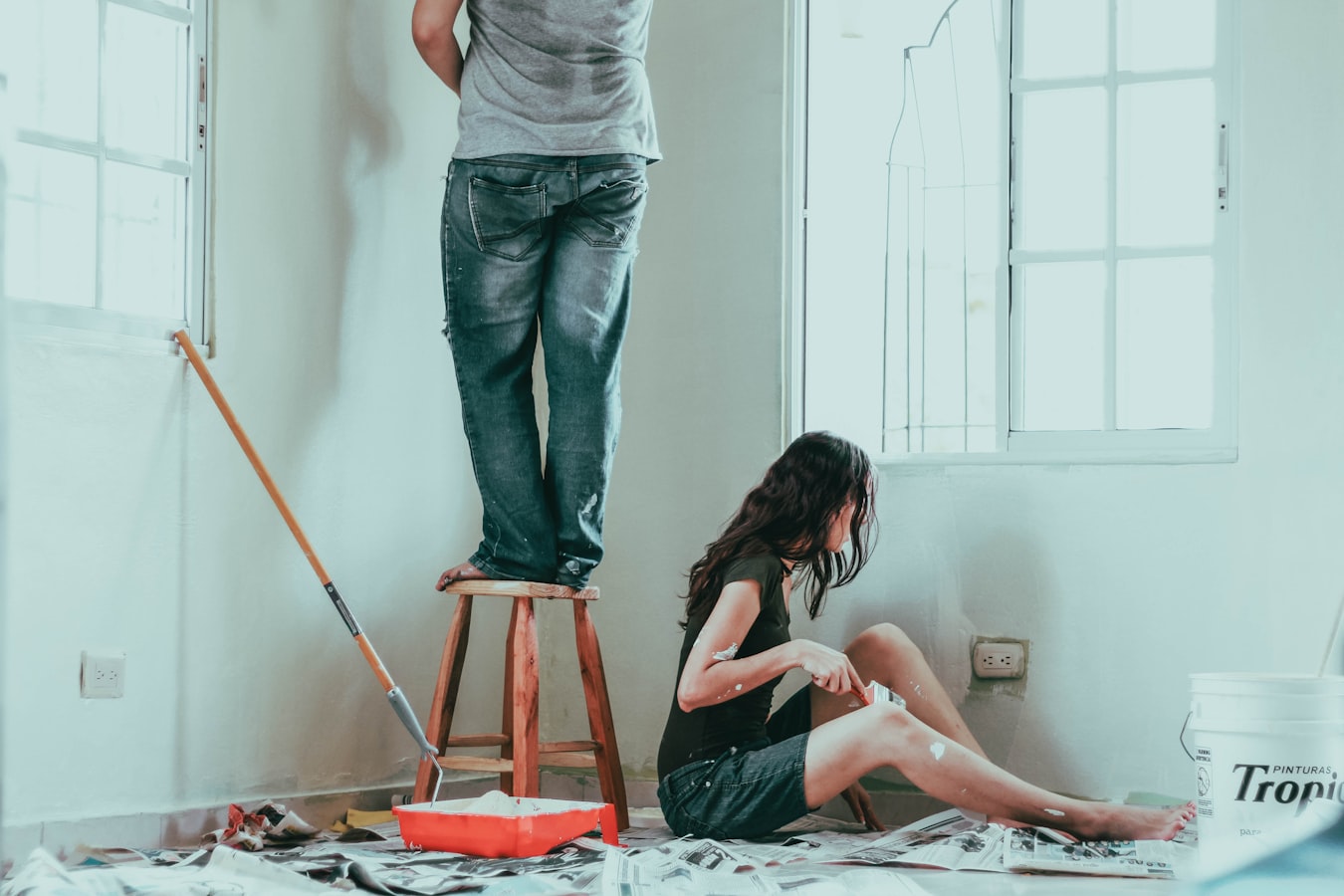You don’t need to have a colorful home to trust the power of paint. When you’re looking to make the most out of your home, there’s a powerful design element at your disposal that can highlight, enhance, and sort of create architectural features that elevate the look and feel of your home.
With the rise of neutral and monochromatic home designs, we have lost touch with our colorful sense. But, color has the power to transform an otherwise dull room into this flamboyant, energized, and vibrant space—no need to add more furniture pieces or change the rug. When you learn to master the power of paint, you can use it to manipulate the way a room looks and feels. You can even use it to create the appearance of architectural features that are not there. In this first rendition of Spacejoy’s Interior Design 101, we’ll talk about the many ways you can use color to transform your home.
The Power of Paint
Paint. Such a simple element and one we usually take for granted when designing our homes. Most of us succumb to the comfort of not even changing the paint colors when we move to a new house. We limit ourselves to the whites, grays, and creams that construction companies have labeled “universal.” But by doing so, we’re limiting ourselves to a world of possibilities.
When you’re choosing your paint colors, you must consider:
- What do you want to see? Do you want your eyes to go towards the floor, do you want your room walls to disappear behind the furniture? These answers will start guiding you toward the right shades and tones.
- Do you want the room to feel more spacious or more intimate?
- What do you want the room to feel like?
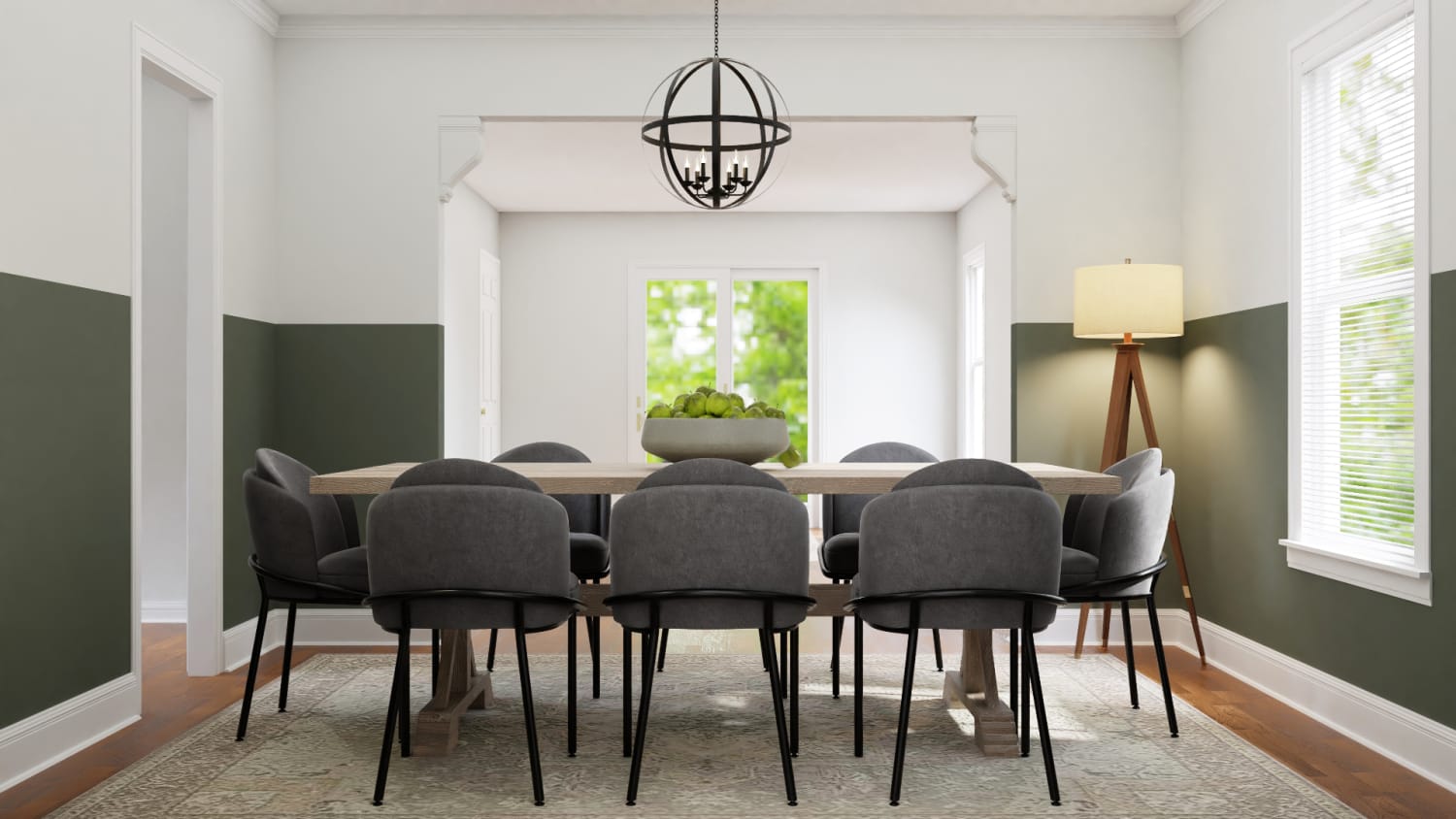
Using Paint to Create Architectural Interest
When your home lacks the architectural interest old houses have, you can use paint to create the same illusion. In this room, we chose warm, earthy colors to break up the wall and make these walls look taller. For example, a block of dark color stops where a dado rail would traditionally have been fitted. The bold contrast with the green above is modern enough to turn it into a fun feature that mixes old ideas with the new designs.
These are some color combinations we love to achieve this effect:
- Oat Milk + Lamb’s Wool
- White Snow + Cracked Pepper
- Cotton + Carriage Stone
- Radiant Dawn + Full Bloom
- Clean Slate + Tarragon
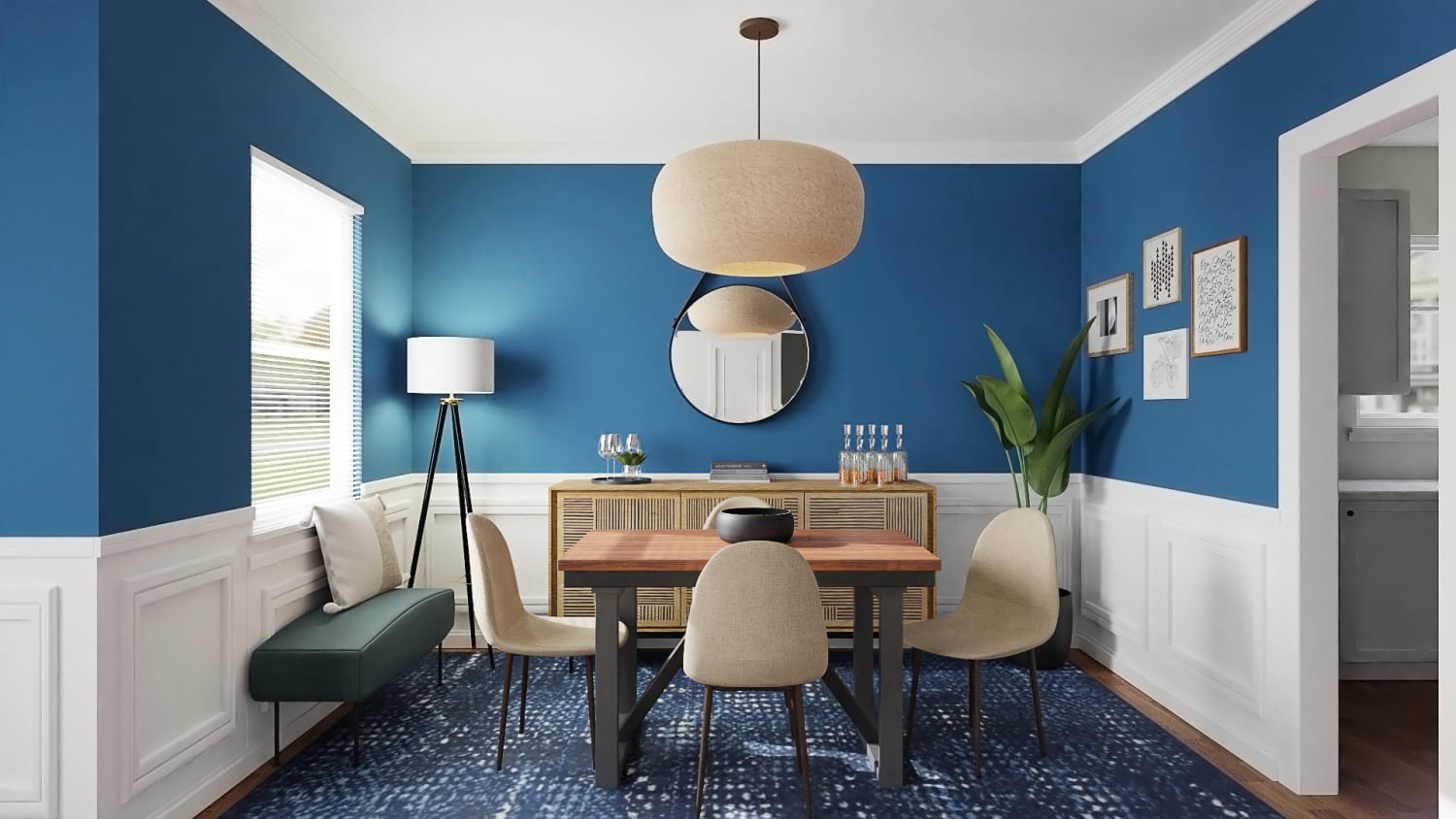
A similar effect can be achieved reversely. In this case, we chose a bold teal color that brings the eyes to the room’s bottom. You can see how we purposely left the wall decor to a minimum, so the focus is on the wall’s architectural accents and the furniture.
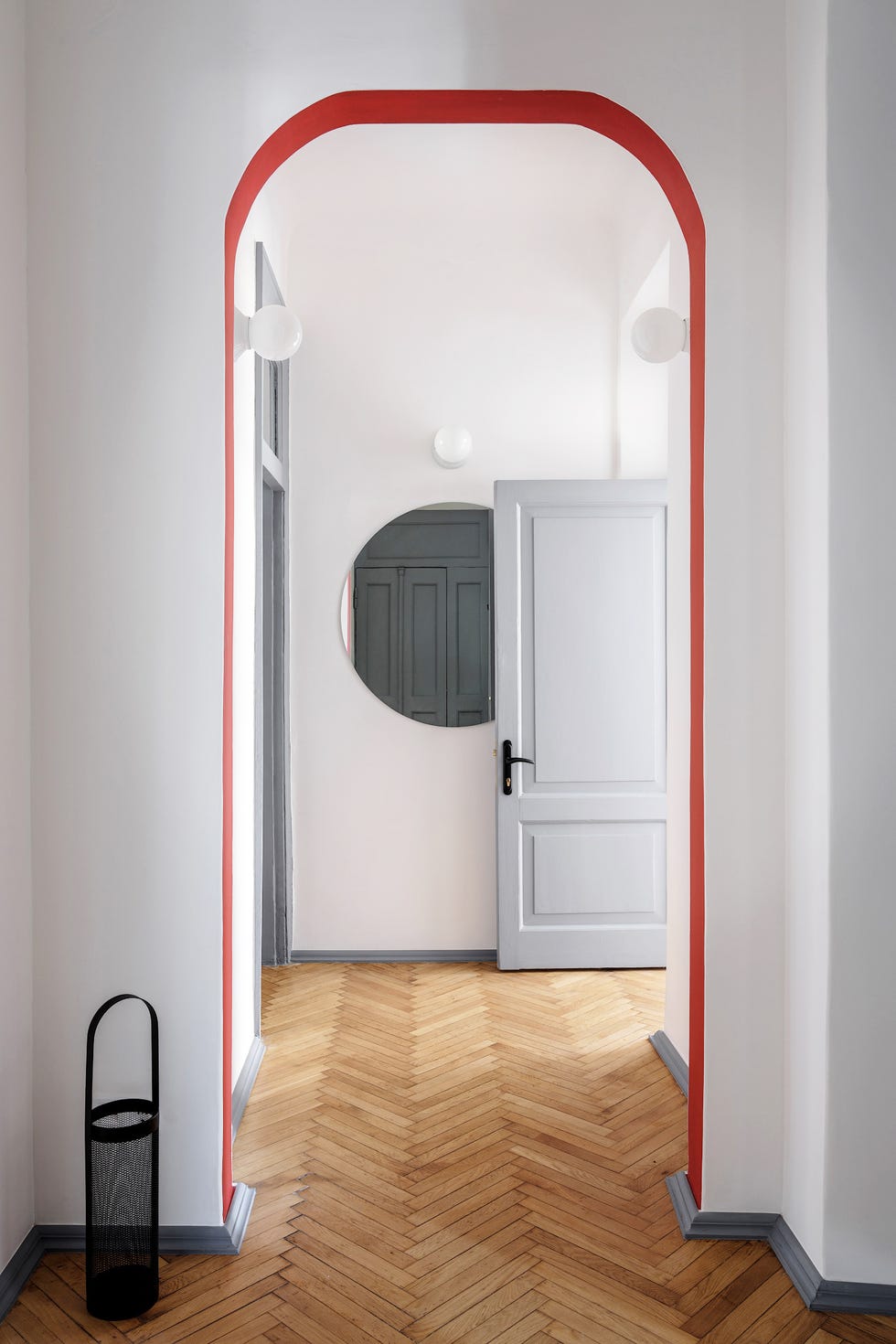
Source: Emily Dervish
Even if you prefer to go with the neutral colors and monochromatic aesthetic for your walls and most of your rooms, you can still add a surprising splash of color. For example, a minimalist hallway is livened up by painting the archway with a vibrant shade. While it’s a subtle touch of color, it makes the hallway that much interesting to look at. Plus, it brings a surge of warmth to the dark gray painted moldings.
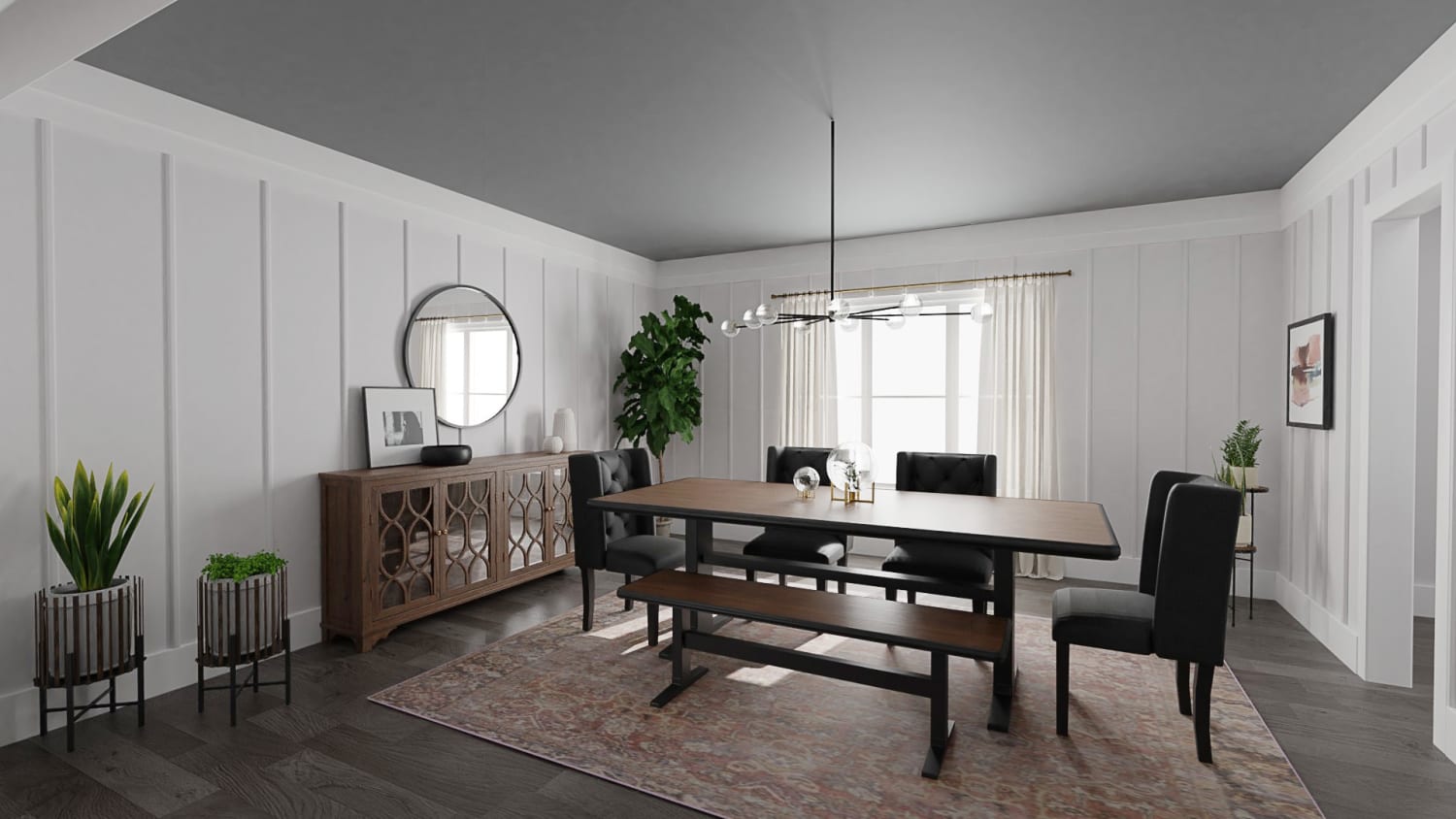
Who says that paint is only for walls? The designer chose a neutral and bold dark gray shade in this space and used it on the ceiling. By teaming this bold hue with simple white walls, the room feels calm and cozy, rather than busy. The use of bold color can help you highlight these types of features instantly.
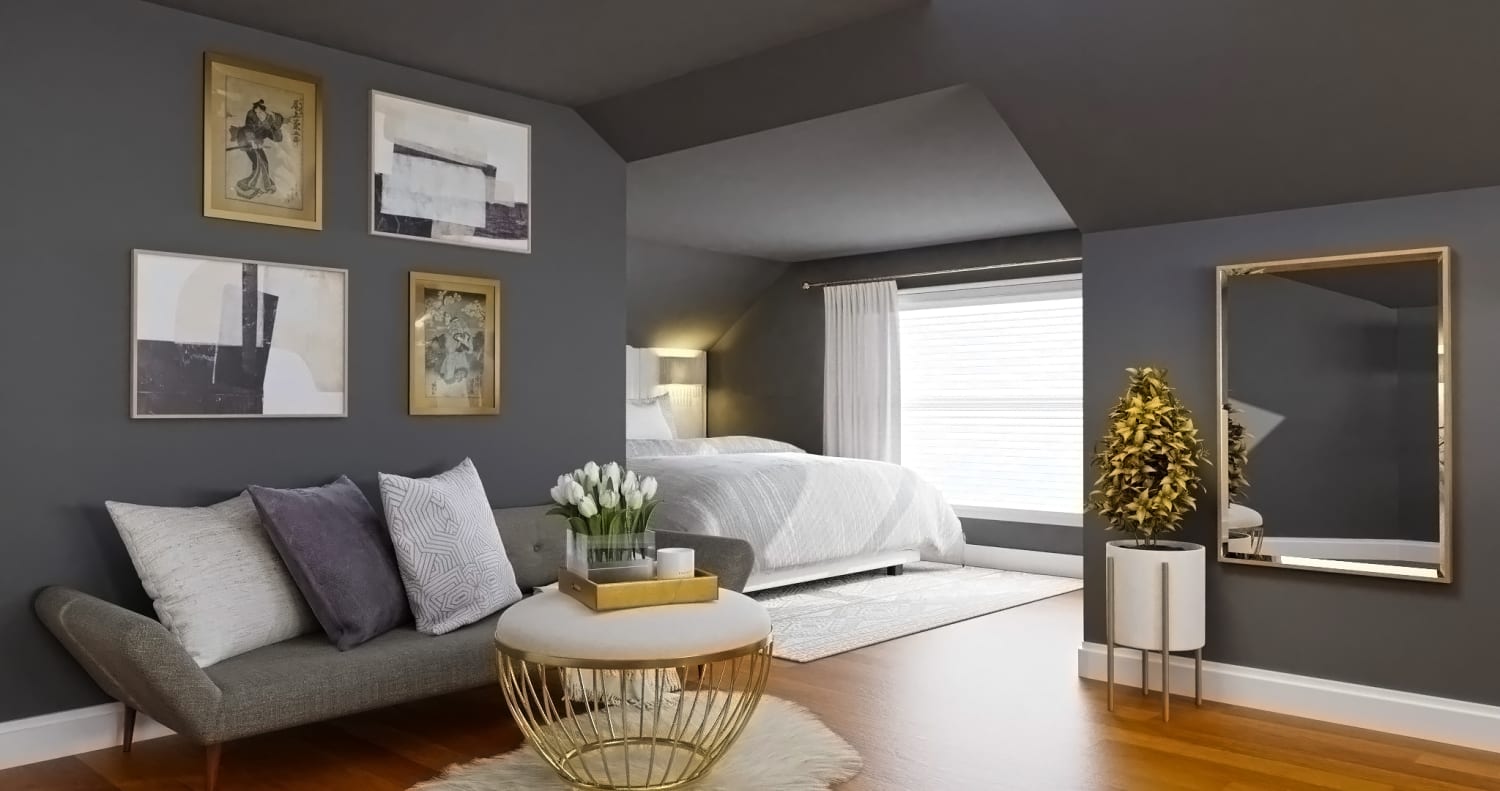
The ceiling on this landing is anything but bland, with various sloped areas forming exciting angles. It gives the home character, but it can be tricky to decide which areas were the ceiling and which walls to paint it. You can be more creative with your interior paint and cover all surfaces with the same color. It’s a bold move that many will find unexpected, but the results can be astonishingly elegant and striking if you choose to go for it. This monochromatic aesthetic is perfect for tiny apartments or studio apartments to make them look more spacious.
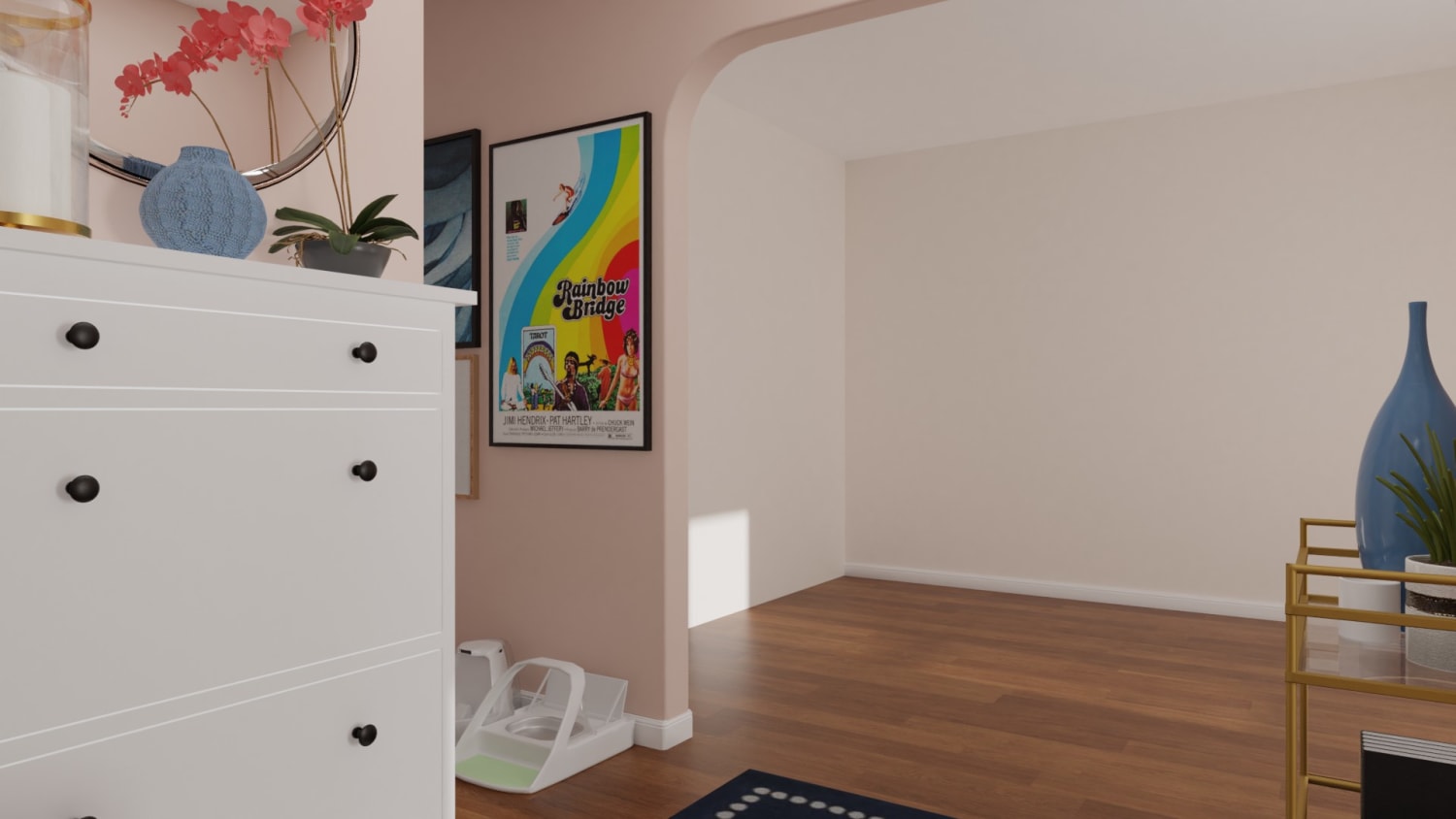
Sectioning Open Spaces
In a small, open-plan space, creating clear divisions between each area can make the room feel more functional. We often make the mistake of thinking we must paint all the same color rooms in our house. Here, the designer used paint to zone the entryway area and feel separate from the living room.
A subtle change of tones, choosing a soft pink, runs from the floor and partway across the ceiling, framing the entryway. The block of color helps to ground the space and provides a change of ambiance and overall aesthetic.
These are some color combinations we love to achieve this effect:
- Chelsea Mauve + Cabbage Rose
- Indian White + Roycroft Rose
- Pink Shadow + Studio Mauve
- Copen Blue + Peacock Plume
- Porcelain + Twilight Gray
Your Final 101 on Paint
Now that you know creative and out-of-the-box ways to use pain to maximize your spaces, there are some things you should learn about painting in general. Overall you should follow these two primary guidelines when prioritizing how to use paint in the different rooms:
- For small rooms, go for lighter or pastel colors. Try to paint the trim and the walls the same color to create a larger space illusion.
- Prioritize your kitchen, bathrooms, entryways, and foyer when it comes to painting. Make sure you use swatches to see how the natural light plays on the color in these spaces.
Then, you have to consider the paint type. Different finishes can affect how the color looks and how functional the paint is in your room. For example, an easy to clean paint might be best for the kitchen and living room, rather than the bedroom. Consider these tips when choosing the right paint type:
- You should stay with flat or cream sheen colors for board walls that will not show any unevenness in walls.
- Use semi-gloss paint on the trim and doors to make it easier to clean.
- Turn to eggshell or semi-gloss for the bathrooms where you might struggle with moisture.
- A satin gloss coat is better for durability and stain resistance, so you might want to use these paint types for accent walls, kitchens, and dining rooms.
Remember, if you’re painting yourself, it’s worth the investment of getting high-quality brushes and rollers to help get that professional, even, flawless look. Ensure you ask about primers or other coats of paint you might need to get the best results.
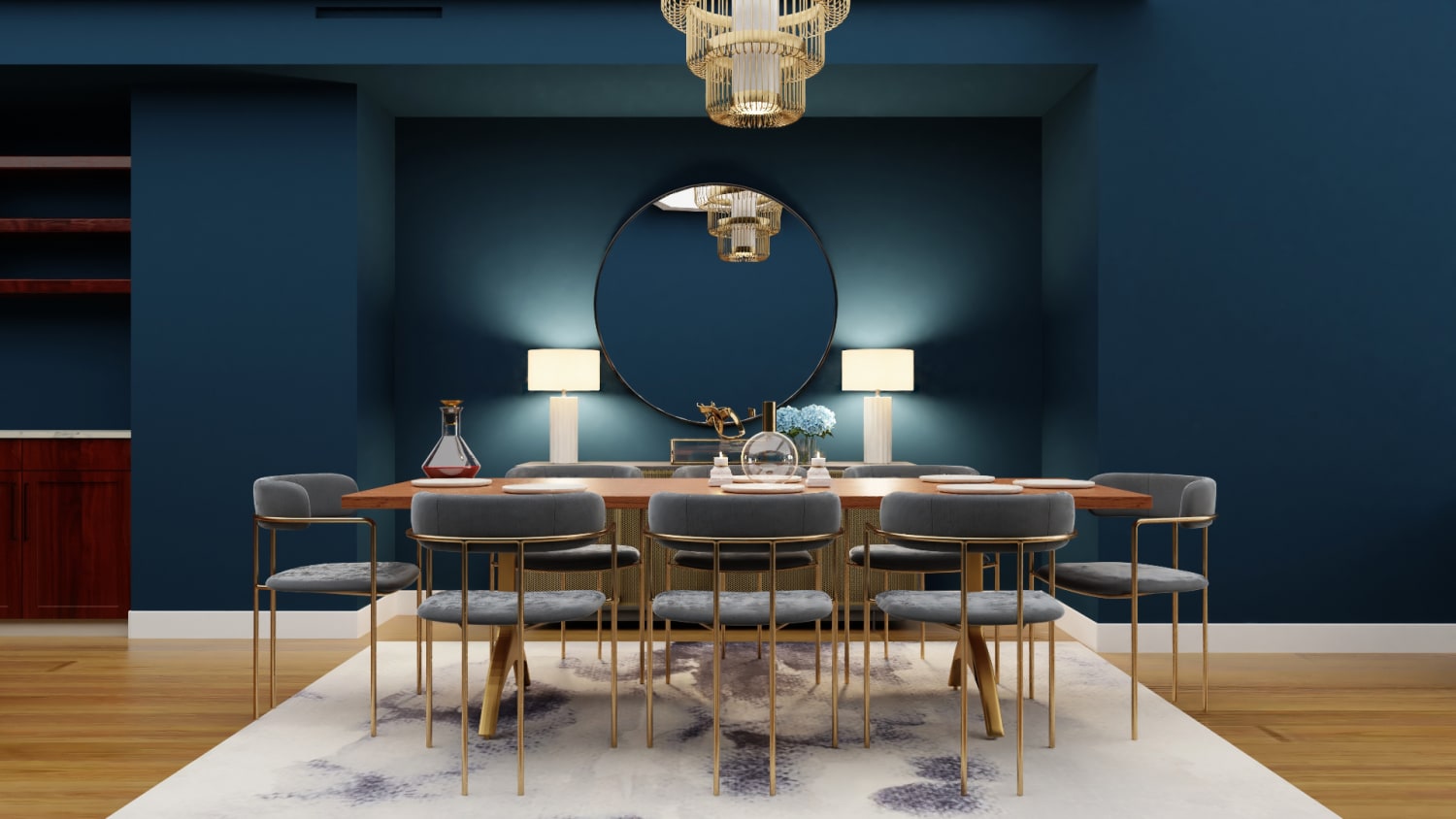
Let Us Help
Even with all this information about mastering the power of paint, picking the right colors for your home can be intimidating. After all, paint isn’t like removable wallpaper; you can’t quickly take down if you end up hating it. We recommend you choose our Bliss package to work with our online interior designers and receive paint recommendations for your space based on your decor style, room layout, and more.

